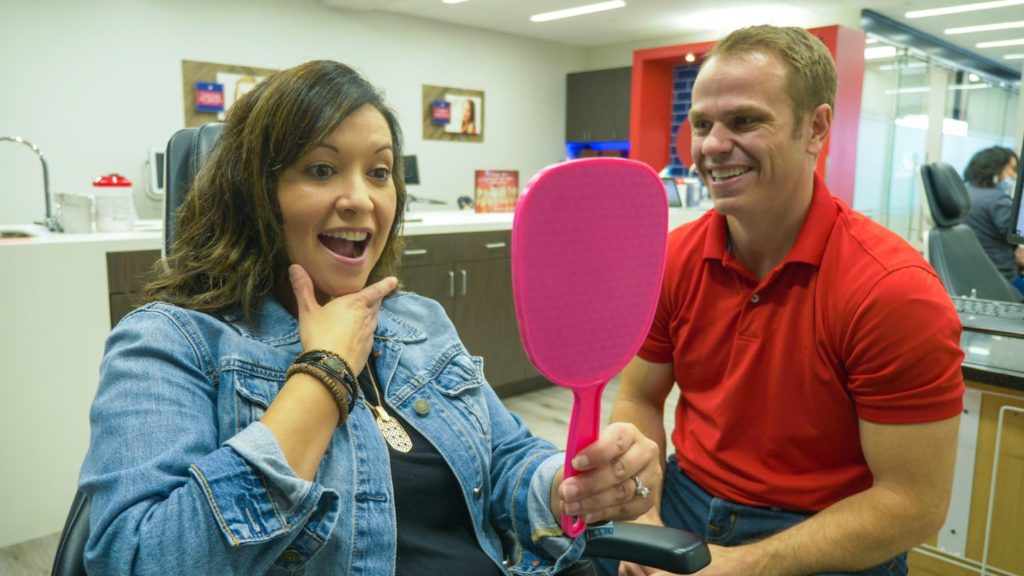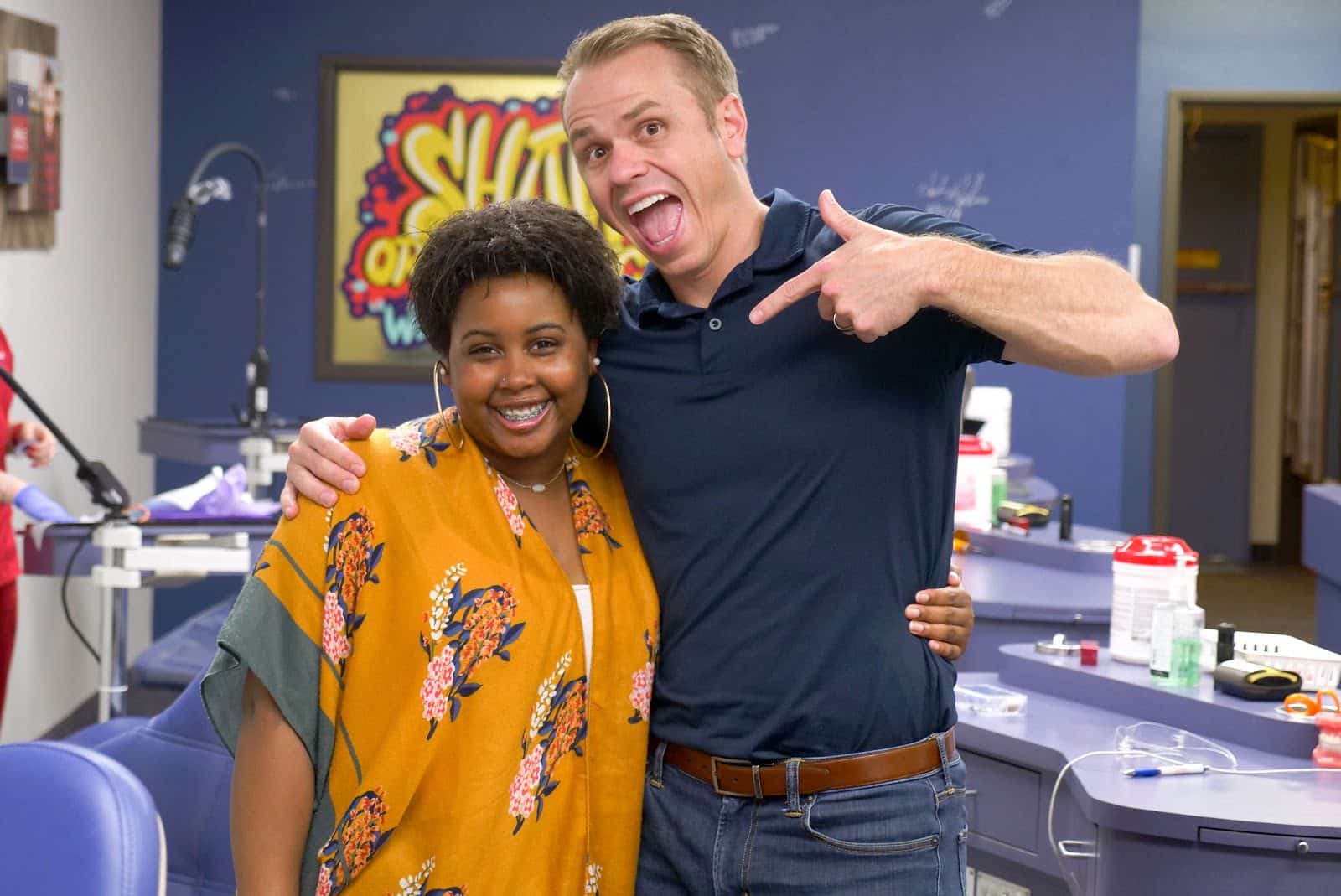Thanks to the transformations that have been happening in orthodontics in recent years, you have more options than ever before to build the healthy, confident smile of your dreams. Using state-of-the-art technology and innovative techniques, Shaw Orthodontics can use several types of braces to successfully treat a wide range of orthodontic issues.
- Crowded teeth
- Gaps between teeth
- Protruding teeth
- Overbite
- Underbite
- Crossbite
- Impacted teeth
We do this using a variety of treatment methods, including traditional metal braces. These are the most common type of orthodontic treatment, and have seen changes to their design, shape, size, and even color! But the choices don’t stop there!
If you’ve been thinking about braces treatment to improve your oral health, you may be wondering what options you’ll have. Your initial appointment with Dr. Shaw will consist of an orthodontic examination that will help determine which treatment option is right for you, your smile, and your lifestyle.
Let’s take a look at the type of braces available and the unique benefits each one might offer to your smile journey.
A note about traditional braces
Since braces can fix complicated problems while closing gaps and aligning teeth than other treatments do, you benefit from a potentially shorter treatment. Because every case is different, treatment time with metal braces will vary from patient to patient. In general, however, the average tends to be anywhere from 14-24 months. Signs of improvement can often be seen in just a short period, which can be very encouraging!
Keeping your teeth, gums, and appliances healthy and in good working order with traditional braces takes a little getting used to and requires a bit of relearning, but it gets easier as you get used to it. A good dental hygiene routine is essential for oral health, particularly during orthodontic treatment. There are many accessories available that have been designed to make cleaning braces easier, such as waterpiks to help rinse any hard to reach areas and ortho picks to assist with flossing.
You may have to avoid some foods while wearing braces to protect them, such as anything sticky or crunchy. These kinds of foods can damage the brackets and wires.
This won’t last forever, though, and will all be worth it once your braces come off, and you see your beautiful new smile!
While you’re wearing braces, you can expect follow-up visits with us every eight weeks or so throughout the treatment process. During these appointments, Dr. Shaw will change the bands attached to the brackets, and the wire may be replaced as well. Check-ups tend to be pretty quick. Though there may be some slight residual soreness after each adjustment, it should only be temporary. These visits are a very important part of the overall treatment plan and help us ensure the best results in the least amount of time, so try your best not to miss them.

Metal braces
Metal braces are among the most recognizable orthodontic tools and are the most common type of treatment. Thanks to a mix of stainless steel, nickel, and other high-quality metals, the brackets are durable and long-lasting.
Don’t worry about any horror stories about metal braces that you may have heard in the past. Modern braces are much more comfortable and smaller than they used to be. These braces deliver excellent results and are especially useful in cases that are more severe or complicated.
Since they don’t require some of the more complex technology or expensive equipment that newer treatments do, metal braces also tend to be a slightly more affordable option. The overall strength, durability, and cost-effectiveness of traditional braces keep them the top treatment for orthodontics, year after year.
Ceramic braces
Sometimes referred to as clear braces, tooth-colored braces, or aesthetic braces, ceramic braces work the same way metal braces do, plus they are less-noticeable because the brackets are made out of semi-translucent or tooth-colored ceramic material. While ceramic braces are about the same size and shape as metal braces, they’re better able to blend in with a patient’s natural smile for a more subtle straightening option.
Although ceramic braces are sturdy, the material they are made from can be prone to chipping or cracking. Since metal braces can tolerate more pressure than ceramic ones, they may be a better option for those who have severe corrections that need to be made.
You should know that ceramic brackets cost a little more than metal brackets. Because of this, and the fact that they’re slightly more fragile, we believe that ceramic braces are better for adults and older teens. That said, ceramic braces can be an excellent option for many patients. When paired with clear, white, or tooth-colored wires and elastic ties, they are an incredibly discreet and efficient way to straighten smiles!
Lingual Braces
Lingual braces are hidden behind your teeth and are completely invisible when you smile. The metal brackets are custom-made to match your teeth’ shape, making them the most individualized treatment we offer. Lingual braces are a great option for athletes, models, actors/actresses, musicians who play wind instruments, and adult professionals who are concerned about their braces showing.

Braces For every smile at Shaw Orthodontics
Not every smile is the same, and what will work for one patient may not be a good choice for another. That’s why Shaw Orthodontics creates a personalized treatment plan for every patient! Our doctor and team have the education, skills, and experience necessary to recommend the course of treatment that’s best for your unique smile.
If you’re in Rockwall, Watauga, and the surrounding areas, we’d love to meet you and talk more about how braces can give you a confident smile you love! Get in touch today to schedule your FREE consultation.

